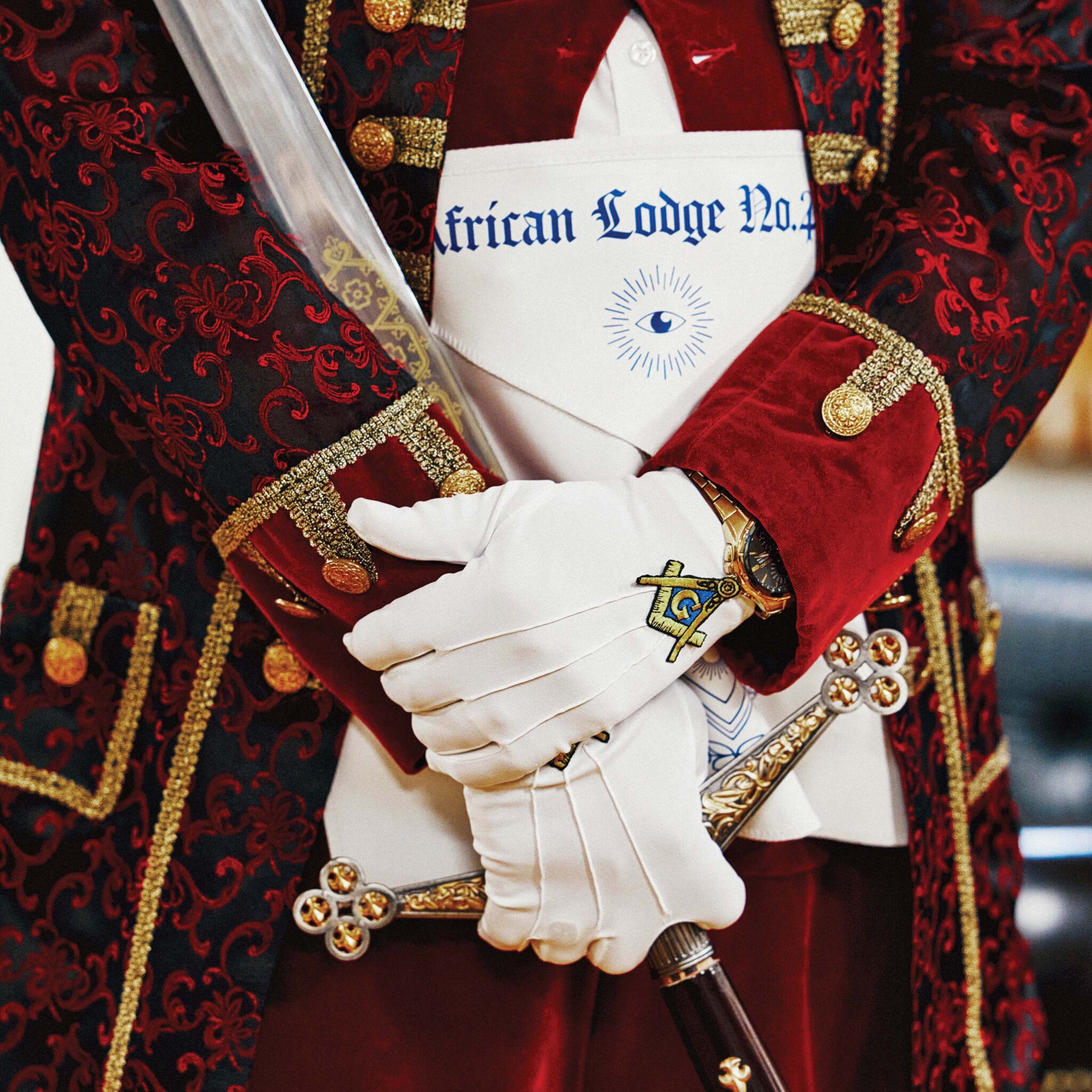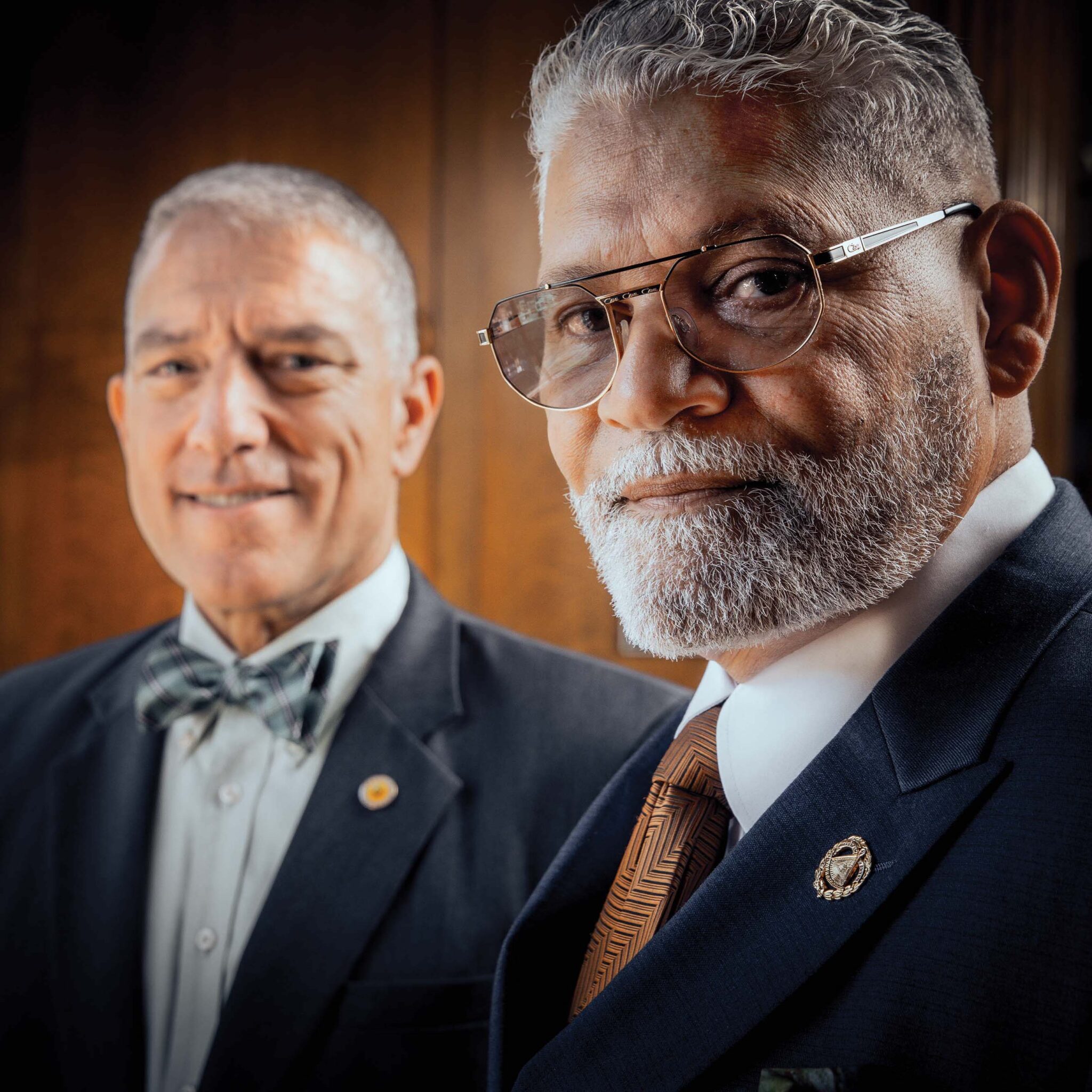
Prince Hall: America’s Masonic Father Figure
Largely overlooked by historians, Prince Hall remains a towering figure of both Masonic history—and American history writ large.

By Ian A. Stewart

Above: Grand Worthy Matron Marilyn Carney shows off the dress regalia of the Prince Hall Order of the Eastern Star, one of the concordant bodies that, within Prince Hall Masonry, falls under the jurisdiction of the state grand lodge.
As the day’s program for the 2023 Annual Communication of the Most Worshipful Prince Hall Grand Lodge of California inched closer, the hotel convention hall’s floor began to fill. Men in black suits with white gloves and embroidered aprons worked their way toward the front, while women in white lace dresses, purple and gold sashes draped over their shoulders, found their seats. All around, a mash-up of members in other regalia—white dinner coats, red fez caps with gold embroidery, striking blue blazers—jockeyed for position.
“It’s like one big family,” explains Marilyn Carney. Carney is currently the grand worthy matron of the Golden State chapter of the Prince Hall Order of the Eastern Star, making her the highest-ranking member of the women’s group. (Within the parlance of Freemasonry, it’s known as a concordant body.)
That spectrum of colors, representing a constellation of satellite groups, is a hallmark of Prince Hall Masonry—as it the tight-knit atmosphere. This is partly because, unlike the Grand Lodge of California, the organization’s concordant and appendant bodies fall under the authority of the Prince Hall grand master. In California, that includes not only the Eastern Star, but also the various bodies of the York and Scottish rites (the latter of which is known within California Prince Hall Masonry as the Robert W. Brown Council of Deliberation). There also exists a California desert (or jurisdiction) of the Prince Hall Shrine, which boasts 10 temples throughout the state. (The Scottish Rite is made of several consistories; the York Rite includes eight active chapters.) Additionally, many of those groups include women’s auxiliaries, such as the Order of the Amaranth and the Imperial Court Daughters (formerly known as the Daughters of Isis). In the latter case, there exists one court, or branch, in California: Egyptian Temple № 5 in Los Angeles. Other states also have women’s groups unique to Prince Hall Masonry, such as the Order of Cyrene Crusaders, the Heroines of Jericho, and youth orders including the Knights of Pythagoras.
This arrangement can create a dizzying array of logos and acronyms at big events. (A.E.A.O.N.M.S. Inc. of North and South America is the full name of the Prince Hall Shrine, for instance.) But, as Carney says, “It’s all under one umbrella.”
Gerald Stringer is familiar with the many outlets within Prince Hall Masonry. He currently holds the title of imperial deputy of the Desert of California, a top appointed position in the Shrine. He acknowledges that the parallel Masonic grand lodges in the state have created some confusion outside the fraternity (and a bit within it, too). “Initially, with the separation of [the Prince Hall Grand Lodge and the Grand Lodge of California], the public didn’t really understand what was going on. I joke that they integrated us before we did,” he says.
While the Prince Hall Shrine is a distinct organization from Shriners International, Stringer says that historically the two groups have worked together on philanthropic and social events, including, for many years, the East-West Shrine Bowl at Stanford. His group features the same accoutrements that people associate with the Shriners, including the red fez and parading go-karts (although with the average age of members ticking up, “Most of them can’t fit in those cars anymore,” he jokes).
While membership in such groups can place major demands on members’ time, Stringer says it’s important to keep the traditions alive. “We need that lifetime of knowledge that our members have,” he says.
And despite the challenges of ushering in a new generation, members of the various groups are able to rely on one another for support and camaraderie. As Stringer says, “In the end, we’re all Masons.”
Photography by:
Justin L. Stewart

Largely overlooked by historians, Prince Hall remains a towering figure of both Masonic history—and American history writ large.

Prince Hall Grand Master David San Juan and G. Sean Metroka of the Grand Lodge of California on deepening an important Masonic partnership.

Drummer Trevor Lawrence Jr. puts Masonry squarely in the spotlight.